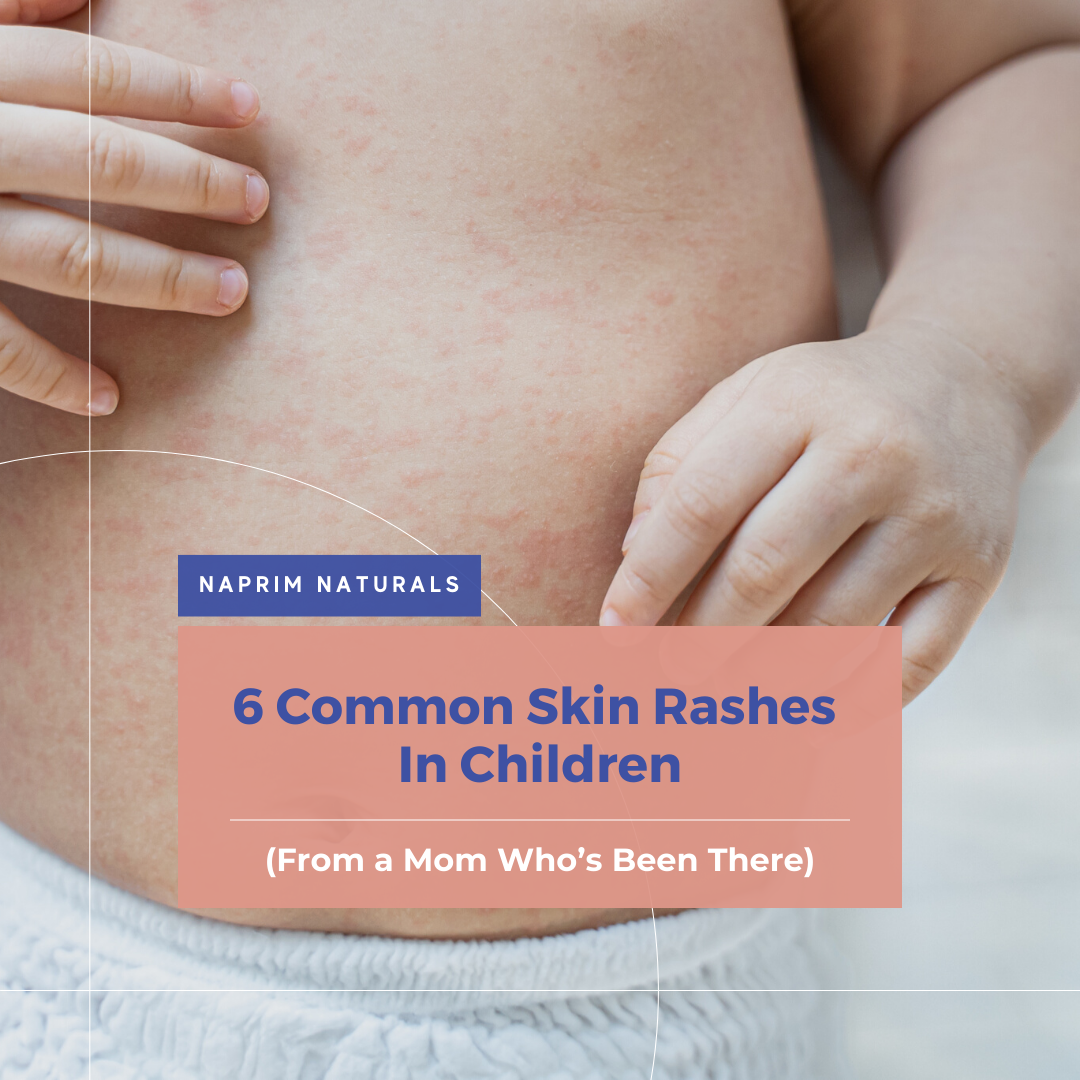
6 Common Skin Rashes in Children (From a Mom Who’s Been There)
Share
So, how did I become somewhat of an expert on kids’ skin rashes? I’m a mom of two and a master hair stylist with a lot of hands-on experience.
But my skincare journey began with my daughter’s battle with eczema, which led me down a path of discovering natural remedies and learning a ton about skin health.
6 Common Skin Rashes in Children
Kids seem to get all sorts of skin issues. Here’s a quick rundown of the ones you might encounter:
- Eczema: This chronic condition makes the skin dry, itchy, and inflamed. You’ll see red patches, and sometimes the skin can ooze or crust over. It usually pops up in skin folds like elbows, knees, and behind the ears.
- Heat Rash: Also known as prickly heat, this rash happens when sweat gets trapped in the sweat ducts. You’ll notice small, red bumps or blisters, especially in hot and humid weather or where clothing is tight.
-
Molluscum Contagiosum: These are small, raised bumps with a dimple in the center. They’re really contagious and spread easily, especially in places like pools or gymnastics classes.
- Hand, Foot, and Mouth Disease: This viral infection starts with sores in the mouth and can cause a rash on the hands and feet. It’s especially common when school starts and can be pretty miserable.
- Psoriasis: Psoriasis is an autoimmune condition that leads to thick, silvery scales and itchy patches. It’s usually found on the scalp, elbows, and knees.
- Contact Dermatitis: This rash results from direct contact with irritants like certain soaps, lotions, or plants. It causes redness, itching, and swelling in the affected area.

5 Natural Remedies That Worked for My Family
Through trial and error, I’ve found a few natural remedies that really help:
-
Nourishing Powder: My all-natural Nourishing Powder has been a lifesaver for treating eczema and hand, foot, and mouth disease. It soothes irritation, reduces redness, and helps repair the skin barrier. The ingredients are selected for their anti-inflammatory properties.
-
Tea Tree Oil: This oil has great antimicrobial properties and works well with the nourishing powder to tackle molluscum contagiosum. It reduces inflammation and helps prevent infections.
-
Aloe Vera: Aloe vera gel is fantastic for soothing sunburns and mild irritations. It hydrates the skin and reduces inflammation.
-
Oatmeal Baths: Adding colloidal oatmeal to a warm bath helps soothe itchy, irritated skin, making it perfect for eczema.
-
Coconut Oil: Coconut oil is moisturizing and has antimicrobial properties. It helps with dry, itchy patches by restoring moisture and reducing irritation.
What to Look For in Skin Care Products
When picking products for your child, here’s what I’ve learned:
-
Fewer Ingredients: Go for products with a short list of ingredients that you can actually pronounce. Fewer ingredients mean fewer chances of irritation.
-
Fragrance-Free: This is a huge culprit of flare ups because fragrances can be a major skin irritant. Choose fragrance-free products to avoid unnecessary skin reactions.
-
Gentle Formulations: Opt for products specifically made for sensitive skin. Avoid harsh chemicals and steroids.
-
Test New Products: Always introduce new products slowly. Try a small amount first to make sure it doesn’t cause a reaction.
-
Apply to Damp Skin: For best results, apply creams or powders to slightly damp skin. This helps with better absorption and effectiveness.

Before I developed the Nourishing Powder, I tried everything from Vaseline and Aquaphor to hydrocortisone creams and Neosporin to help treat my daughter’s eczema.
While these products often left greasy residues or didn’t provide long-term relief, the Nourishing Powder I created turned out to be a breakthrough. It helped address redness and irritation effectively without the downsides of other treatments.
I know firsthand how overwhelming it can be to manage your child’s skin rashes. But knowing the types of rashes and having a few reliable remedies can make a huge difference.
My experience with eczema and other rashes has taught me the value of natural, gentle treatments. Always consult with a healthcare professional for personalized advice. But don’t shy away from exploring natural solutions.
Your child’s skin deserves the best care… and everything we need can be found in nature!
